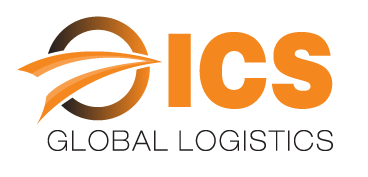When it comes to international trade and the movement of goods across borders, customs clearance plays a pivotal role. It’s the process through which customs authorities ensure that imports and exports comply with relevant laws and regulations. One crucial aspect of customs clearance is tariff classification. In this blog, we’ll dive deep into understanding tariff classification and how it impacts customs clearance in Australia.
What is Tariff Classification?
Tariff classification is the systematic assignment of a numerical code to products or commodities, known as a Harmonized System (HS) code. This code is used to categorize goods for customs purposes, and it determines the applicable customs duties, taxes, and import/export restrictions. Each country has its own tariff classification system, but most countries, including Australia, use the Harmonized System (HS) as a basis for their customs tariffs.
The Harmonized System is a globally standardized system that classifies products into categories and assigns unique codes to each category. This system simplifies international trade and promotes consistency in customs procedures worldwide. It consists of a hierarchical structure where products are classified according to their features, materials, and intended use.
Why Tariff Classification Matters
The correct classification of goods under the HS code is of utmost importance for several reasons:
1. Customs Duties and Taxes: The tariff classification determines the customs duties and taxes applicable to imported or exported goods. Different products are subject to varying duty rates, and an incorrect classification can lead to overpayment or underpayment of customs duties, which can result in financial losses for businesses.
2. Compliance: Accurate classification ensures that goods comply with import/export restrictions, licensing requirements, and safety standards. Failure to classify goods correctly can lead to delays in customs clearance, fines, and even confiscation of goods.
3. Trade Agreements: The HS code is essential for determining eligibility for preferential trade agreements or trade concessions. Proper classification can lead to reduced or waived customs duties under certain trade agreements, benefiting businesses by making their products more competitive in international markets.
The Role of Tariff Classification in Australian Customs Clearance
In Australia, customs clearance is overseen by the Australian Border Force (ABF). ABF is responsible for ensuring that goods entering and leaving the country comply with relevant laws and regulations. The correct classification of goods under the HS code is crucial for a smooth customs clearance process.
Here’s how tariff classification impacts customs clearance in Australia:
1. Import Declaration: When goods arrive in Australia, importers or their representatives are required to submit an Import Declaration to ABF. This declaration includes information about the imported goods, including their tariff classification. The accurate classification is essential for determining the applicable customs duties and taxes.
2. Risk Assessment: ABF uses the information provided in the Import Declaration, including the HS code, to assess the risk associated with the imported goods. Certain products may be subject to additional scrutiny due to health and safety concerns, intellectual property issues, or national security considerations.
3. Compliance Verification: ABF may conduct compliance verifications to ensure that the goods comply with Australian regulations. The accuracy of the tariff classification plays a vital role in these verifications, as it determines whether the goods meet relevant safety and quality standards.
4. Customs Duties and Taxes: The HS code determines the amount of customs duties and taxes payable on the imported goods. If the goods are incorrectly classified, importers may either overpay or underpay these charges, which can have financial implications.
5. Trade Agreements: Australia has several trade agreements in place with other countries, such as the ASEAN-Australia-New Zealand Free Trade Agreement (AANZFTA) and the Australia-United States Free Trade Agreement (AUSFTA). The correct classification of goods is essential for determining eligibility for preferential tariff rates under these agreements.
How to Determine the Correct HS Code
Determining the correct HS code for your goods is a critical step in ensuring a smooth customs clearance process in Australia. Here’s how to go about it:
1. Consult the Harmonized System: The Harmonized System is a comprehensive document that provides descriptions and guidance on the classification of products. It’s essential to refer to this system when classifying goods.
2. Seek Professional Advice: If you’re unsure about the correct classification, consider seeking advice from a customs broker or a professional who specializes in trade regulations. They can provide expert guidance and help you avoid costly mistakes.
3. Self-Assessment: Importers are ultimately responsible for the correct classification of their goods. It’s crucial to conduct a self-assessment to determine the most appropriate HS code based on the characteristics and intended use of your products.
4. Sample Codes: You can refer to sample HS codes provided by customs authorities to get a better understanding of how products are classified. These sample codes can serve as a starting point for your classification process.
5. Training and Education: Invest in training and education for your team involved in customs clearance processes. Having staff members who understand tariff classification can prevent errors and ensure compliance.
The Challenges of Tariff Classification
Tariff classification is not always straightforward, and there are several challenges that importers and exporters may face:
1. Complexity: The Harmonized System is highly detailed and includes thousands of codes. Determining the correct code can be complex, especially for products with unique features or functions.
2. Ambiguity: Some products may fall into a gray area, making it challenging to determine the correct classification. Customs authorities may provide rulings to help clarify such situations.
3. Frequent Changes: Tariff classifications can change due to updates in the Harmonized System, trade agreements, or government policies. Importers and exporters must stay informed about these changes to remain compliant.
4. Legal Consequences: Incorrect classification can lead to legal consequences, including fines and penalties. It’s essential to invest in accuracy and compliance to avoid such issues.
Conclusion
Understanding tariff classification is crucial for a successful customs clearance in Australia. Proper classification not only ensures compliance with customs regulations but also has financial implications, as it determines the amount of customs duties and taxes payable.
By accurately classifying your goods under the HS code, you can navigate the complex landscape of international trade, take advantage of trade agreements, and streamline your import and export processes. Remember, when it comes to tariff classification, getting it right from the beginning is key to a hassle-free customs clearance experience.
For a seamless customs clearance experience, it’s essential to work with experts who understand the intricacies of Australian customs regulations. Get professional support for your customs needs, and ensure that your goods are correctly classified and meet all compliance requirements. With the right guidance, you can expand your international trade operations and achieve your business goals while avoiding costly errors in the customs clearance process.

